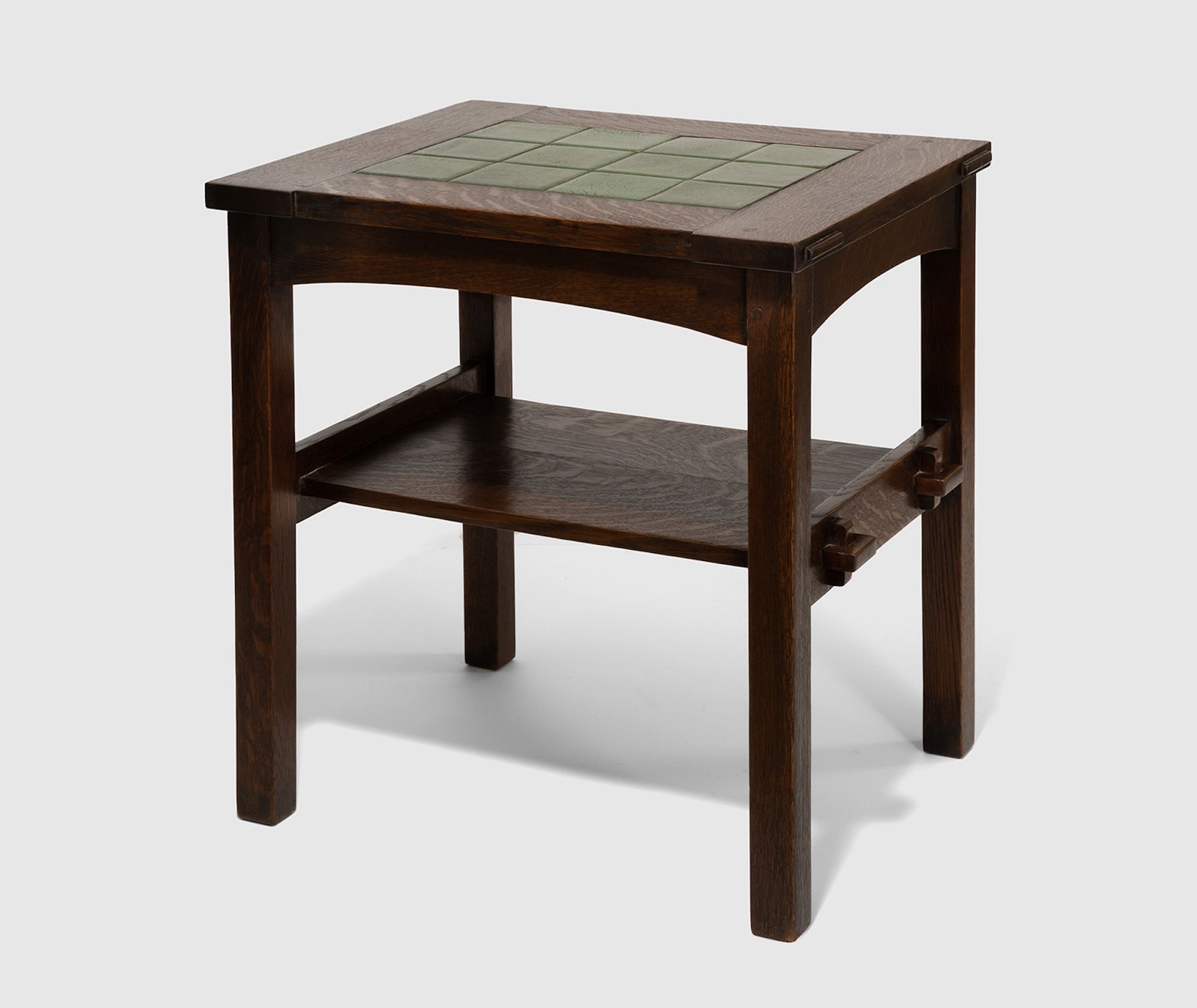DESIGN COLLECTING OCTOBER 10 2023
by Daniella Ohad
Daniella Ohad recaps her weekly conversations with experts in design collecting

BARBA D’ARGENTO CHAIR BY PAOLO PALLUCCO & MIREILLE RIVIER, 1986
Photo © Studio Shapiro; courtesy of Ketabi Bourdet
Comprising one-on-one interviews with international experts, Collecting Design: History, Collections, Highlights is a Fall 2023 webinar program hosted by Daniella Ohad for Christie’s Education. For the Design Miami/ Forum, Ohad shares highlights from each conversation. This week, it’s Paul Bourdet and Charlotte Ketabi of Ketabi Bourdet in Paris.

LEFT: GALLERISTS PAUL BOURDET AND CHARLOTTE KETABI-LEBARD / RIGHT: ED ARCHER CHAIR BY PHILIPPE STARCK, C. 1986, LENT BY KETABI BOURDET TO ANNÉES 80 AT MUSÉE DES ARTS DÉCORATIFS
Photo © Lily Allegra; courtesy of Ketabi Bourdet / Photo © Studio Shapiro; courtesy of Ketabi Bourdet
For Charlotte Ketabi and Paul Bourdet, founders of the eponymous gallery in Paris’ Saint-Germain-des-Prés quarter, the opening of Années 80: Mode, Design & Graphisme en France at Musée des Arts Décoratifs last year felt like a tremendous vote of confidence. In case you missed it, the blockbuster museum exhibition shined a light on the extraordinary, transformational design production of the 1980s, highlighting its relationship to larger historic currents that continue to impact our world today—from the proliferation of globalism and an ever accelerating media ecosystem to the AIDS crisis and the fall of the Berlin Wall. Although Ketabi and Bourdet were born in the 1990s and are too young to have experienced the it firsthand, their gallery specializes in design objects from the postmodern era. The duo spent years consulting archival sources and piecing together undocumented material to develop their expertise around this still underrepresented secondary market niche before taking the bold decision to launch their gallery a few years ago. As my first guests in this fall’s Collecting Design: History, Collections, Highlights webinar series, they shared insights into why 1980s furniture has become the hottest topic in collectible design today.
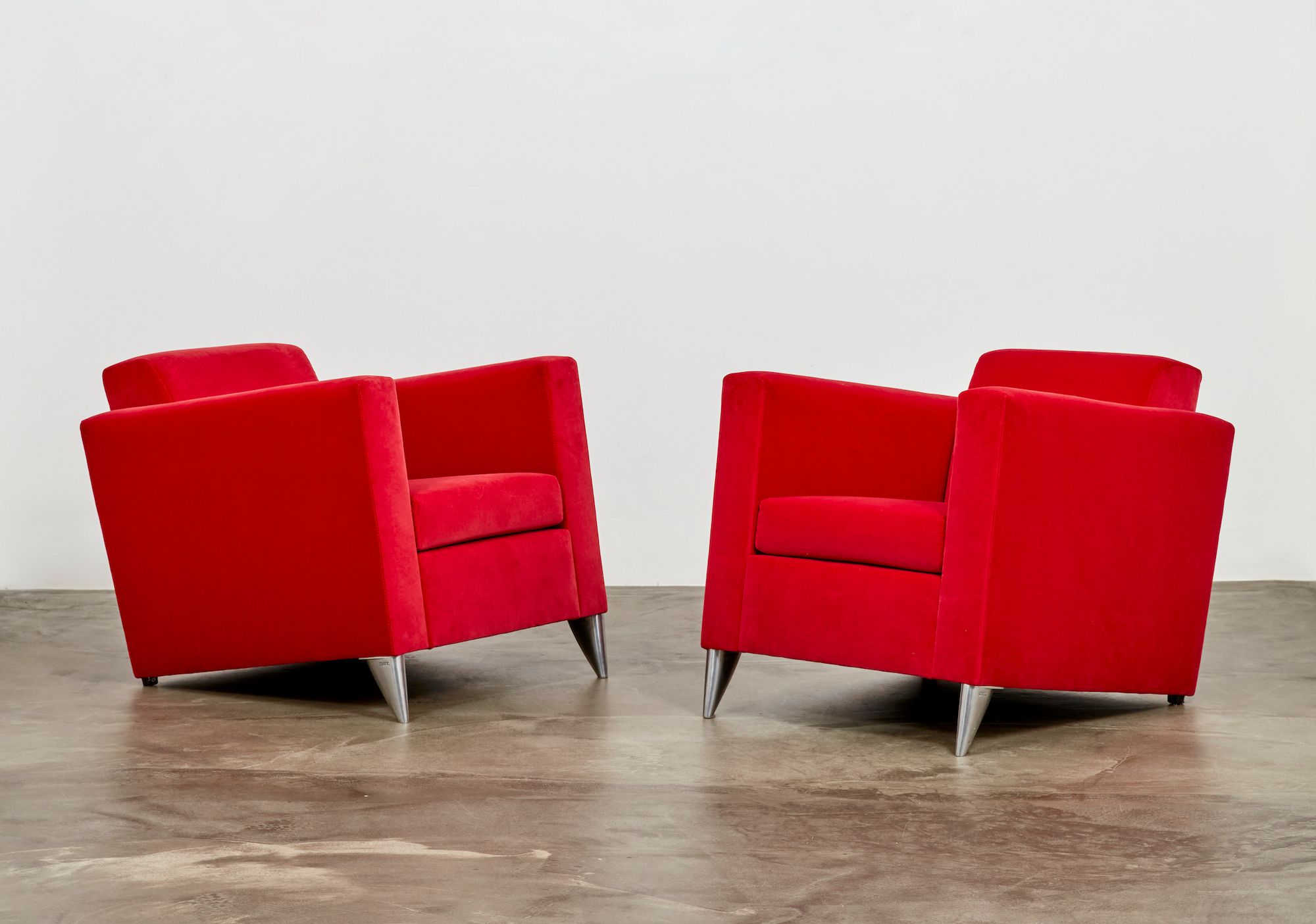
LEN NIGGELMAN ARMCHAIRS BY PHILIPPE STARCK, C. 1985
Photo © Studio Shapiro; courtesy of Ketabi Bourdet
As someone who did live through the era, I found my conversation with Ketabi and Bourdet evoked fond memories. When I moved to New York City from Tel Aviv in the 1980s, Philippe Starck’s dynamically eclectic Paramount Hotel was the talk of the town—a destination unlike any other at the time. We hung out there not for the food and wine but to be inspired by the sensational environment that Starck designed. These years saw the rise of a number of designers—especially in designers in France—who, like Starck, embraced a daring, individualistic, and expressive design language, including Elizabeth Garouste, Mattia Bonetti, and Martin Szekely, to name a few. Some favored traditional artisanal production while others pursued the latest technology, but the designers who defined the era did not shy away from strong points of view.
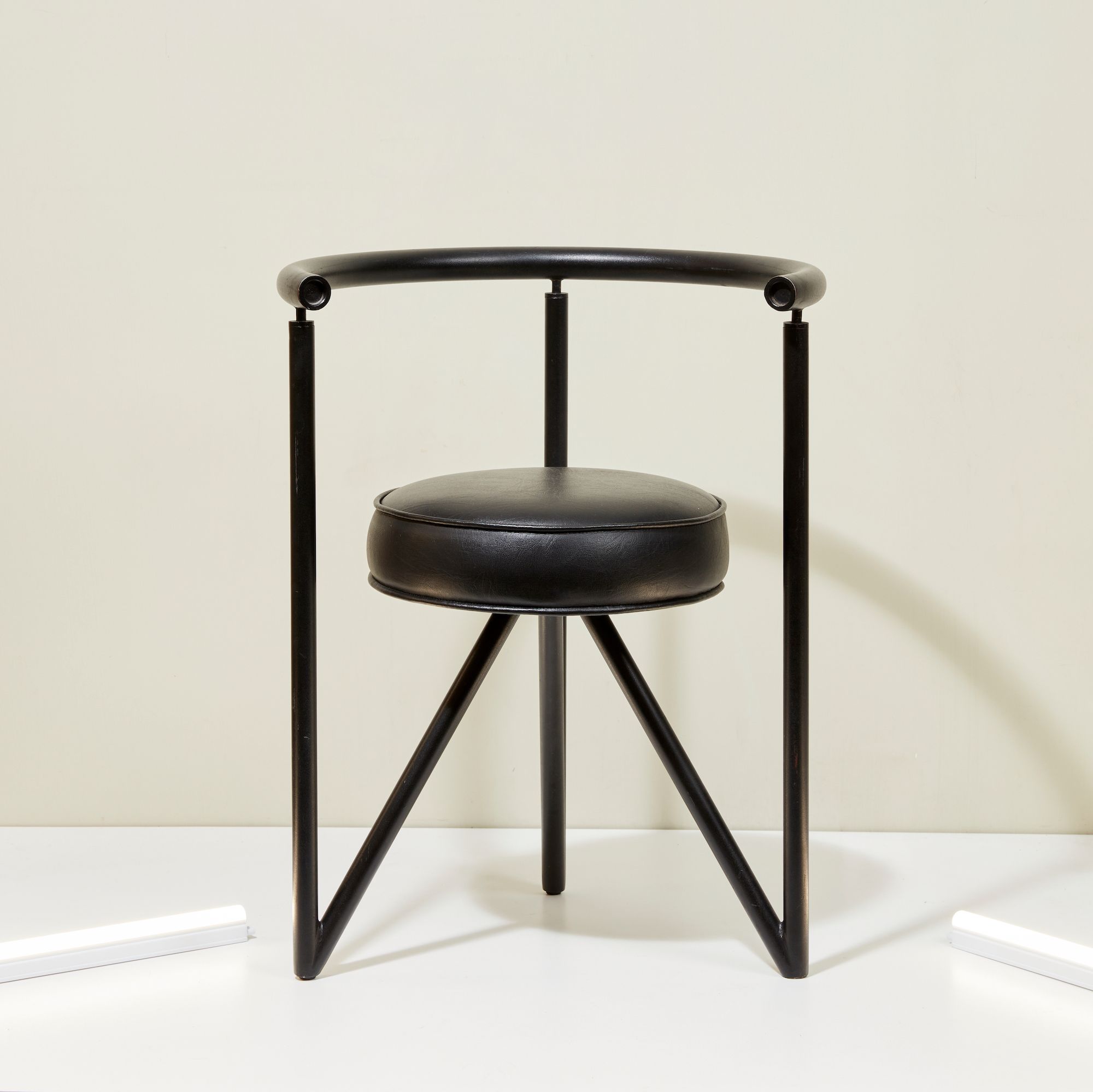
MISS DORN CHAIR BY PHILIPPE STARCK, C. 1982
Photo © Studio Shapiro; courtesy of Ketabi Bourdet
Through well researched, well curated exhibitions at their gallery and participation in international fairs like Design Miami, Ketabi and Bourdet have been at the forefront of resurfacing this special moment in design history to a growing audience of admirers. Some collectors, the duo explained, are like me, looking back on the era with a sense of nostalgia; others want to branch into fresh material following years of collecting French mid-century modern. And then there are emerging Gen Z collectors, for whom 1980s design objects are appreciated as exotic and alluring antiques.
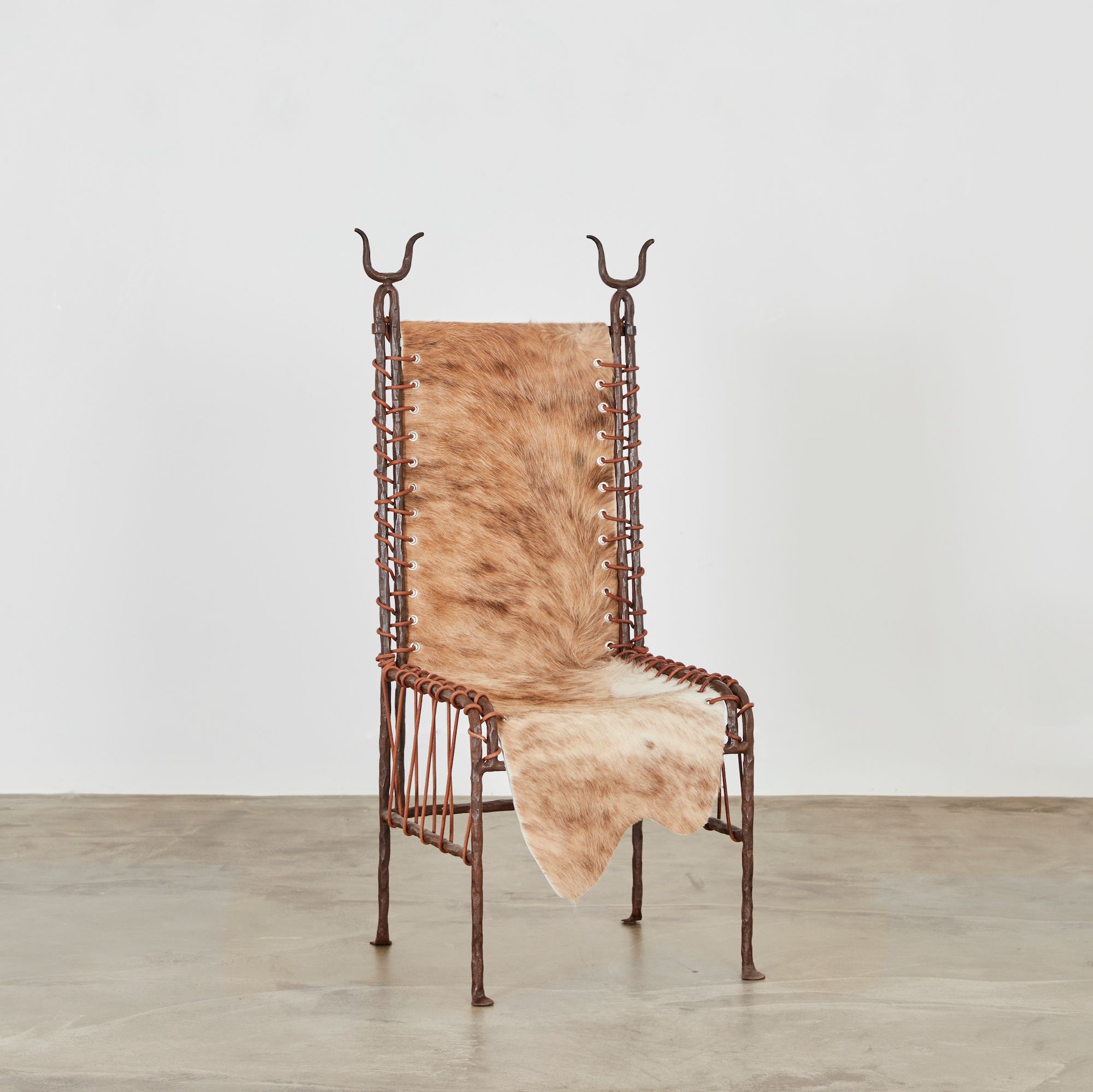
BARBARE CHAIR BY GAROUSTE & BONETTI, C. 1981, EDITED BY GALERIE NÉOTU
Photo © Studio Shapiro; courtesy of Ketabi Bourdet
Within the multi-stylistic landscape of postmodern design, the Ketabi Bourdet gallery has carved out its own niche within the niche. Do not expect to find there the exuberant works of Memphis, the surrealist creations of Shiro Kuramata, nor the rough hewn salvaged metal assemblages of London’s Cut & Shut movement. Ketabi Bourdet, instead, zeroes in on a particular aesthetic thread running through the era characterized by minimalist forms, monochromatic palettes, and excellent craftsmanship—essentialist sculptural pieces that make their presence known, especially in chicly pared back urban interiors.
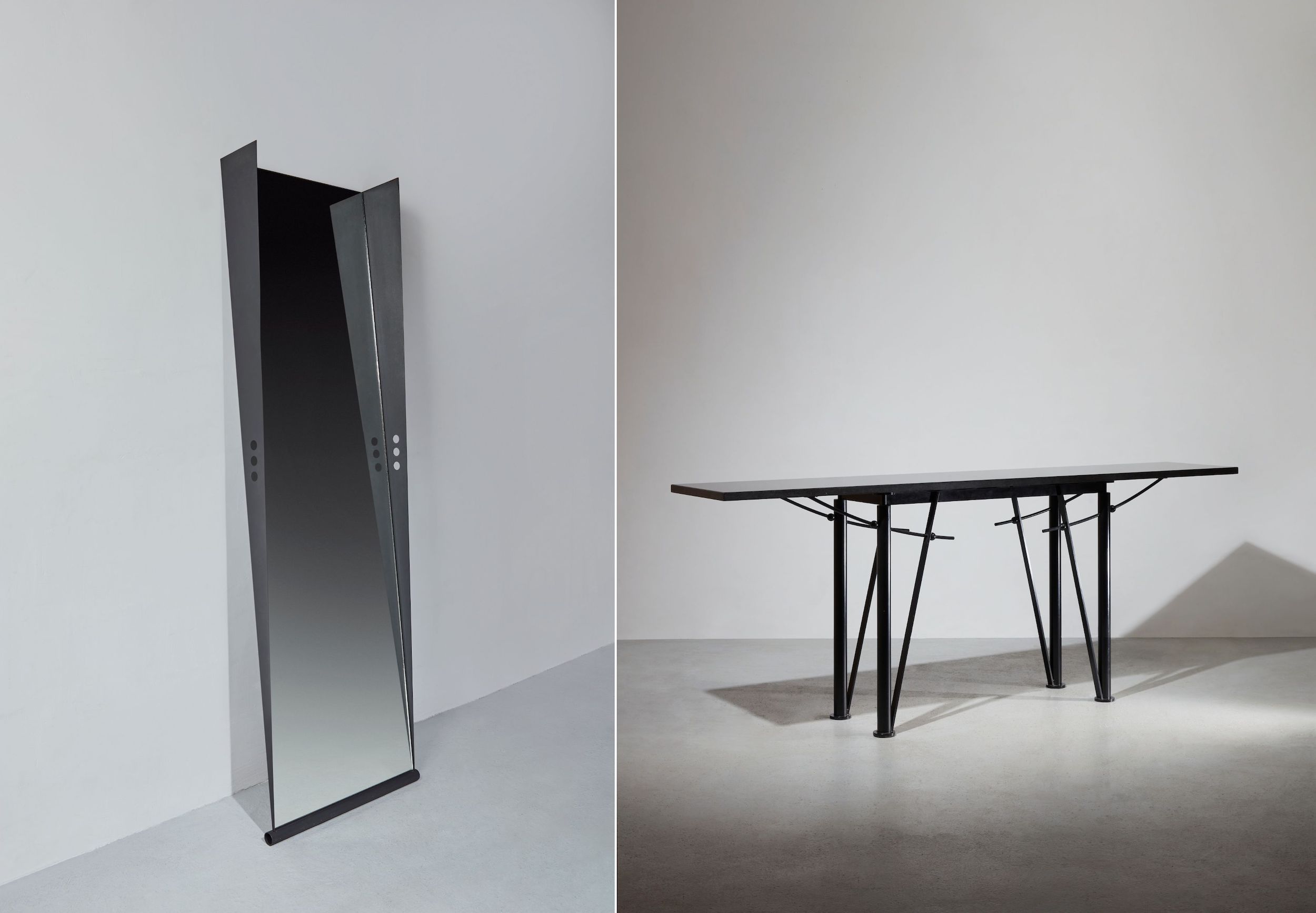
TOM DOUBLE STANDING MIRROR BY PHILIPPE STARCK, C. 1985, AND WASHINGTON CONSOLE BY JEAN-MICHEL WILMOTTE, C. 1983
Photos © Studio Shapiro; courtesy of Ketabi Bourdet
This sharp focus is not surprising given Bourdet’s background working with the sleek masterpieces of Jean Prouvé, Charlotte Perriand, and Pierre Jeanneret. During the years Bourdet spent on staff at one of the world’s leading galleries for mid-century French design, it became clear to him that the 1950s and 60s have been fully discovered. He realized he wanted to establish his own gallery dedicated to the undiscovered, and the 1980s, he told us, was an fascinating, bold, and affordable era with a lot to be explored. He began to read up on the subject, buying books and searching online. The more he learned about it, the more he loved it. As his taste developed, he started to buy more. By the time he partnered with Ketabi and opened a space, he had earned the nickname, “Mr. 80s.”
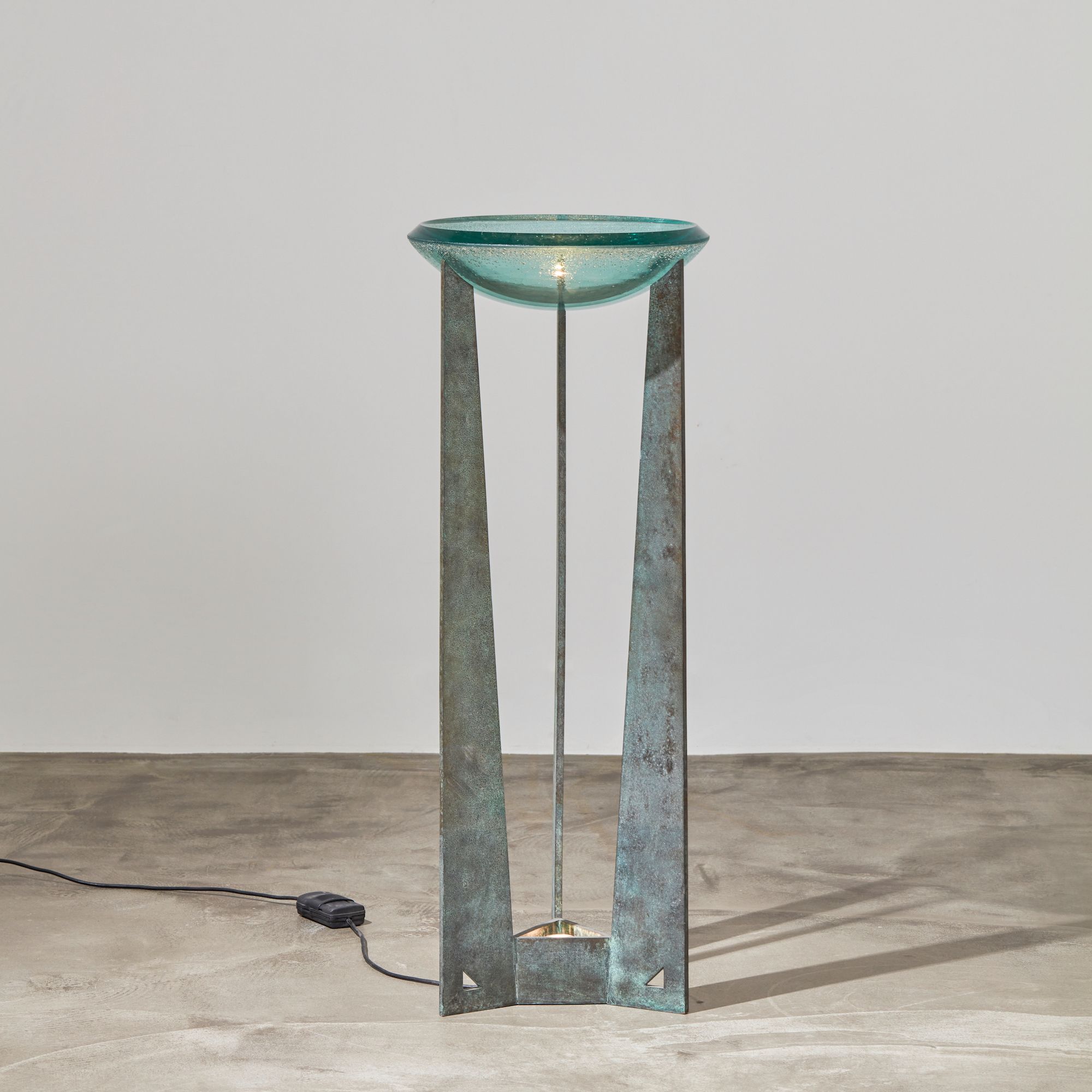
ARCHÉOLOGIE FUTURE BY CHRISTIAN DUC, C. 1987, EDITED BY GALERIE NÉOTU
Photo © Studio Shapiro; courtesy of Ketabi Bourdet
At Ketabi Bourdet, some of the most valuable and most radical design objects were originally edited by Galerie Néotù, which was founded in Paris in 1985 by Pierre Staudenmeyer (1952-2007)—a visionary dealer who, along with David Gill in London, invented the contemporary collectible design gallery. Fashion designers and tastemakers loved Galerie Néotù’s “art furniture” created by visionaries like François Bauchet, Olivier Gagnère, and Garouste & Bonetti. Ketabi Bourdet also represents select works from the prolific portfolio of Philippe Starck, the French superstar who is widely understood to have captured the spirit of the 1980s more than any other designer. According to Bourdet, not everything by Starck is collectible, so the gallery concentrates on Starck’s avant garde furniture from 1978 to 1990—which was produced in small numbers thanks to the limited demand at the time. For the upcoming edition of Design Miami/ Paris, Ketabi Bourdet will present a 1980s smoking room featuring Starck’s most expensive piece: the Tom Double Standing Mirror from 1985.
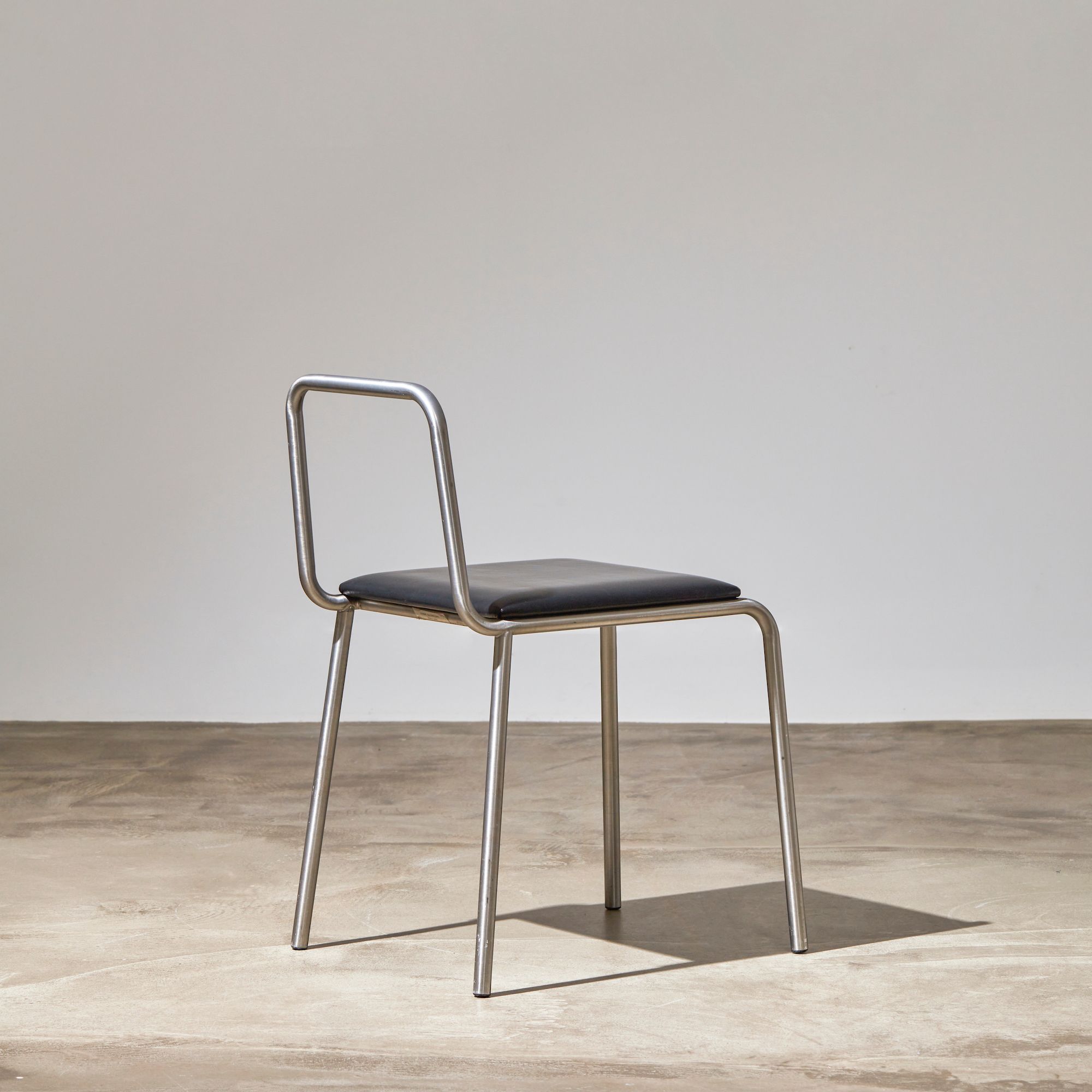
N°7 CHAIR BY REI KAWAKUBO, C. 1987, MANUFACTURED BY PALLUCCO
Photo © Studio Shapiro; courtesy of Ketabi Bourdet
While most of the works represented by Ketabi Bourdet were made in France, the gallery incorporates select talents from abroad. One key example is Italian designer-manufacturer Paolo Pallucco, for whom the gallery has almost single handedly revived the market. Together with his wife Mireille Rivier, Pallucco launched his furniture company in Rome in 1979, initially dedicated to re-editioning modernist designs from the 1920s and 30s. As the 1980s progressed, however, the husband and wife team began to produce their own radical, conceptual designs as well as the designs of other vanguard creatives, like Japanese fashion designer Rei Kawakubo of Comme des Garçons.
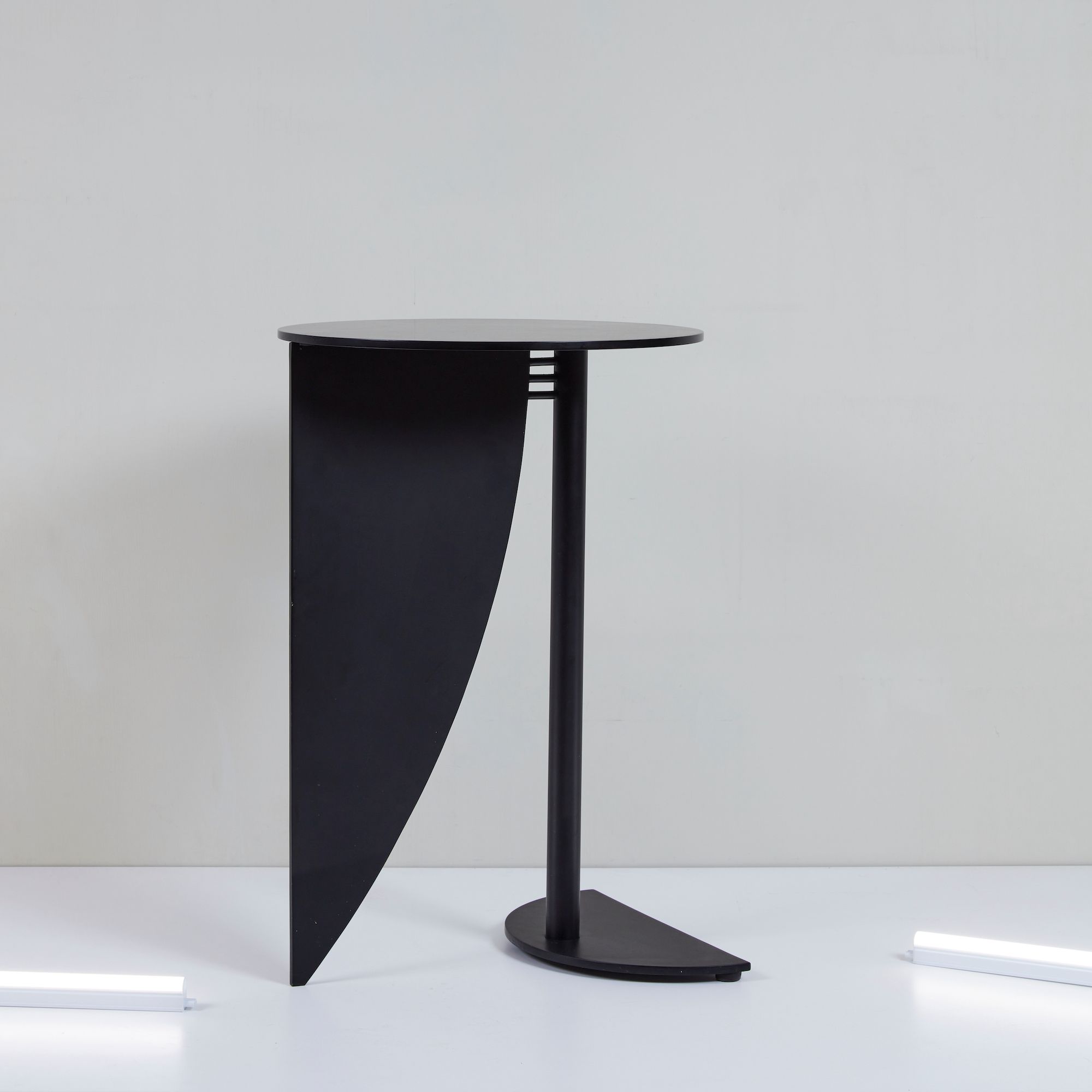
PI SIDE TABLE BY MARTIN SZEKELY, C. 1984, EDITED BY GALERIE NÉOTÙ
Photo © Studio Shapiro; courtesy of Ketabi Bourdet
When our conversation turns to Martin Székely—son of artists Vera and Pierre Székely and one of the outstanding talents originally represented by Galerie Néotù in the 1980s—Bourdet calls him “the Jean Royère of the 80s” and the “designer of the rich and famous,” noting that the French designer has enjoyed a continuous cult-favorite status throughout his decades-long career, attracting high-profile clients like art collector and business mogul François Pinault. Székely’s groundbreaking, exquisitely made, minimalist designs perfectly embody the area of expertise that Ketabi and Bourdet have staked out in the collectible design market. As Staudenmeyer once said of a lounge designed by Székely, it’s “neo tout,” meaning new in every way. It was exciting to hear that Ketabi and Bourdet have plans to expand into contemporary design, including commissioning new work from Elizabeth Garouste. I know we can expect great things from these young, energetic gallerists.
To watch Ohad’s Collecting Design: History, Collections, Highlights webinar program, register here.


